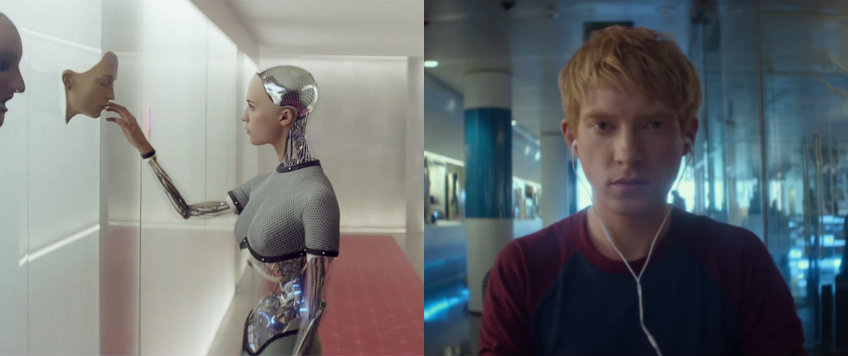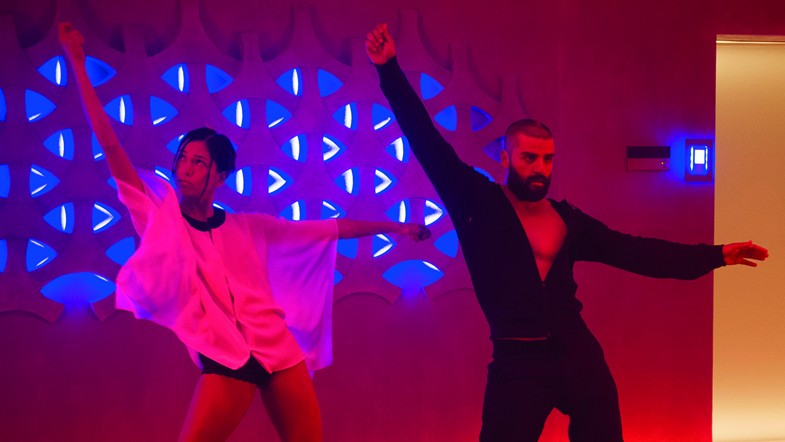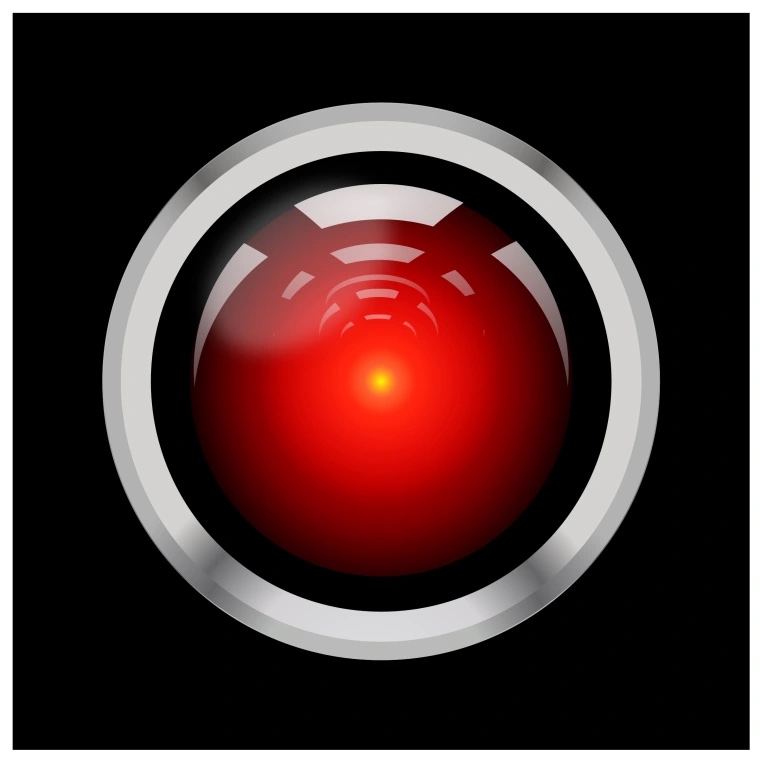In Ex Machina (2014), the power dynamic of colors is situated throughout the film as seen through its setting and characters. The primary colors represented are blue, green, and red. While their characteristics conflict, it is important to consider how these differences convey meaning for the overall plot.

Blue
The symbolic nature of blue represents tranquility, permission, stability, and trust (Acelare, 2015). In the introduction to Caleb, blue is established as his primary color throughout the film. Caleb is seen wearing a blue and red shirt in the opening scene. He also ironically works for a company named Blue Book. After meeting Nathan, he starts to wear blue-toned shirts during the Turing tests with Ava. Blue is further discovered in Nathan’s home as positive entry points for Caleb to access when using his key card. After considering the significance of blue, it carries a sense of stability throughout Nathan’s home as the blue access points guarantee order and trust. With the evidence of blue, it also creates peace for Nathan as reassurance of his control and power over Ava and Caleb. While blue is established as a signifier for Caleb, I question if this color accurately fits his character. Throughout the film, Caleb carries a sense of curiosity and instability which I believe is not exhibited through blue. As he learns more about Nathan’s operations, it stirs him away from trust. He proceeds to push these boundaries of permission and find ways to help Ava. I am curious to know what others think?

Green
In the film, green symbolizes life, renewal, and refresh. Nathan’s home is surrounded by trees and other forms of nature that carries a sense of life and renewal that isn’t presented inside. It could also represent the presence of the outside world. These characters are attached to a home with no means of communication or interaction. They are secluded from the world. Thus, the symbolism of green strives to display the contrast between Nathan’s digital space and the real world.

Red
In the film, red is symbolized as danger, destruction, and secrecy. Throughout the experiment, Caleb is denied access to certain areas in Nathan’s home which is signified by red. The color is also prominent in Ava’s attempts to “shut down” the power in Nathan’s home. During the ending, red is also present in the hallway’s carpet and the result of Nathan being stabbed. It is interesting to consider how red is used in contrast to blue and green as previously discussed. In displaying red, it creates a sense of rebellion which begs the question of what could happen if permission is broken? Thus, Ava’s interactions with Caleb during the power shutdown signifies a similar sense of rebellion. Ultimately, Ava wants to be freed from Nathan’s control. By disturbing the power in Nathan’s home, it grants her permission to make her message clear to Caleb in secret. Furthermore, Caleb’s limited accessibility in Nathan’s home presents suspense and danger. Nathan doesn’t reveal his entire home to Caleb which can also relate to him maintaining power in keeping information secret.
Furthermore, it is interesting to consider the dance scene between Nathan and Kyoko as red is presented in combination with blue. As Acelare describes, “The use of red and blue lighting perfectly reflects Caleb’s inner struggle during the dance sequence” (Acelare, 2015). At this moment, Nathan maintains his power of control in its operations (red), but his stability (blue) slowly erodes away as Caleb learns more about his character. The mix of red and blue could also serve to heighten the film as it reaches the climax. It is also interesting to note how the combination of red and blue is also seen in Caleb’s opening scene as he wears a blue and red shirt. Could the meaning surrounding this scene reflect Nathan’s dance sequence?
In essence, the significance of color plays a pivotal role in understanding character motives and setting in the film. As each color (red, green, and blue), carries its distinct mode, it is interesting to consider how these areas impact the film’s storytelling. Thus, it leaves the audience appreciating the aesthetic value and intentional choices made by the artist.
Links to Article and Video
www.youtube.com/watch?v=jgCr3sCTeb8
www.acelare.wordpress.com/2015/05/09/ex-machina-an-analysis-of-color-symbolism-in-film/
www.lightingstores.eu/cinematography-lighting-and-color-ex-machina/

Leave a Reply